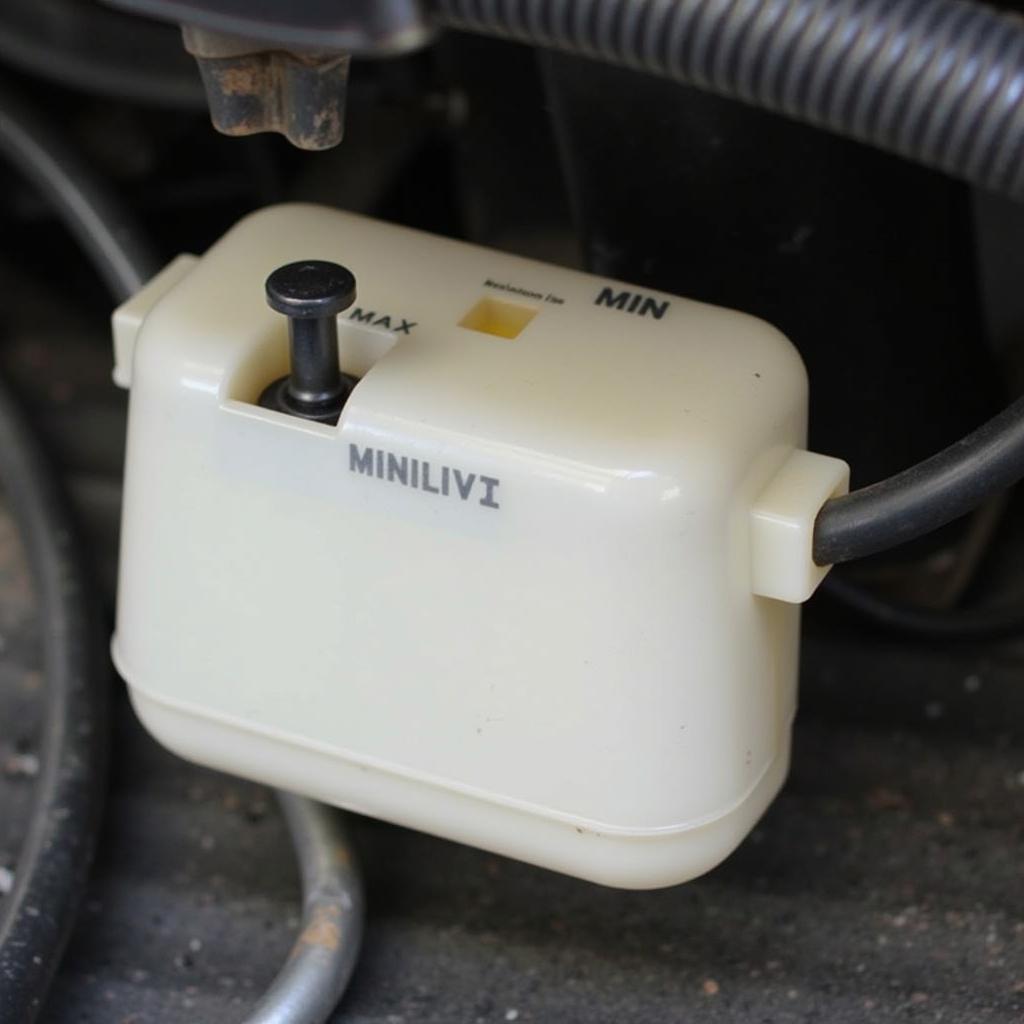If your 1999 Ford Expedition’s brake warning light is staring you down from the dashboard, you’re not alone. This common issue can stem from various culprits, ranging from a simple fix like low brake fluid to more complex problems requiring professional attention. This guide delves into the potential reasons behind this illuminated warning, empowering you with the knowledge to address it head-on.
Decoding the Warning: Why is My Brake Light On?
The brake warning light is your vehicle’s way of saying, “Hey, something’s up with the brakes, let’s get this checked out.” Ignoring it is like ignoring a flashing “low fuel” sign – eventually, you’re headed for trouble.
Several factors can trigger the brake warning light in your 1999 Ford Expedition:
- Low Brake Fluid: This is the most common culprit. As brake pads wear down, the brake fluid level naturally drops. If it dips below a safe level, the warning light signals a refill is needed.
- Worn Brake Pads: Speaking of brake pads, these hardworking components have a lifespan. Once they wear thin, the brake warning light illuminates, urging you to replace them.
- Faulty Brake Light Switch: This switch, positioned near the brake pedal, signals the brake lights to activate when you press the pedal. If it malfunctions, the brake warning light might join the party.
- ABS Issue: If the Anti-lock Braking System (ABS) encounters a problem, its dedicated warning light usually illuminates. However, in some cases, it can trigger the general brake warning light.
- Other Brake System Problems: Leaky brake lines, malfunctioning calipers, or a failing master cylinder can also turn on the brake warning light.
Troubleshooting the 1999 Ford Expedition Brake Warning Light
While a professional mechanic is best equipped to diagnose and repair complex brake issues, here’s a step-by-step guide for preliminary troubleshooting:
- Check Your Brake Fluid: Park on a level surface, pop the hood, and locate the brake fluid reservoir. The reservoir will have a “min” and “max” marking. If the fluid level is below the “min” line, it’s time to add more brake fluid that meets your vehicle’s specifications.
- Inspect Your Brake Pads: While checking the brake fluid, take a peek at your brake pads through the spaces between the wheel’s spokes. If the pads appear thinner than ¼ inch, it’s a good indicator they need replacement.
- Listen Carefully When Applying Brakes: If you hear unusual noises like grinding, squealing, or scraping when you engage the brakes, it’s a telltale sign of worn brake pads or a more serious issue.
 Brake Fluid Reservoir
Brake Fluid Reservoir
When to Call in the Pros
While the steps above can help you address simple issues, remember that brakes are critical for your safety. If the warning light persists after adding brake fluid or if you suspect a more complex problem, it’s crucial to seek professional help immediately.
Driving with a brake warning light on is like playing a dangerous game of chance.
“I can’t stress enough the importance of addressing brake issues promptly,” says John Miller, a seasoned automotive technician with over 20 years of experience. “Ignoring a brake warning light is like ignoring a ticking time bomb. It’s not worth the risk.”
Conclusion: Prioritize Your Safety, Address Brake Issues Promptly
A glowing brake warning light in your 1999 Ford Expedition is a clear sign that your braking system requires attention. By understanding the potential causes and following the troubleshooting steps outlined above, you can take the first steps towards resolving the issue.
Remember, when it comes to brakes, safety should always be your top priority. Don’t hesitate to consult a qualified mechanic for any persistent or complex brake problems.
